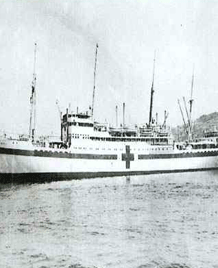 Denmark
Denmark
List for UN Allies
Background of Participation
Upon the UNs resolution to support South Korea, Denmark decided to offer medical support to South Korea. The Danish government asked the Red Cross to dispatch the hospital ship, Jutlandia. The Jutlandia was equipped with surgical, internal, dental, and radiation treatment facilities. Completing preparation, it departed from Denmark on January 23, 1951. After supplied with food, beverage, etc. in Japan, the hospital ship arrived in Pusan on March 7th.
Activity of the Jutlandia
Around the time when the Jutlandia was entering into the Pusan port, casualties were increasing due to UN counterattack operations. Most of them were serious enough to require a major operation. Moreover, members of the medical team had difficulties in adjusting themselves to a new environment. Nevertheless, they did their best to give medical treatment to the wounded. Fortunately, as the hospital ship had the newest medical facilities and medicine, with prominent medical teams, the patients rapidly recovered. As the armistice talks convened, the UN Commander suggested the Jutlandia as a place for negotiation on June 30, 1951, at which Denmark agreed. But the Communist side refused the proposal.
With completing eight months of duty in Korea, the Jutlandia left Pusan for Denmark on July 24th. After changing medical team, the hospital ship was dispatched to Korea again. The Danish hospital ship restarted its mission of caring for the war wounded from November. In 1952, as the front came to a lull with the agreement on the temporary military demarcation line, the number of patients decreased considerably. Given the situation, medical team members returned from their holidays, and worked in field hospitals or medical bases of the USA and Norway. On March 29th, the Jutlandia, completing its second mission, departed from Pusan with hundreds of wounded soldiers of European countries including Belgium, France, Greece and the Netherlands. The hospital ship safely transported the wounded, calling at each country.
From July 1952, the Jutlandia prepared for its third dispatch. The Danish government loaded the ship with one helicopter for patient transport. In addition, the ophthalmic treatment was added to the hospital ship. The medical team members were also increased to 91, composed of 1 senior officer, 14 doctors, 1 pharmacist, 52 nurses, and 23 administrative personnel. On November 20th, the Jutlandia arrived at Inchon, where it started medical activities unlike the cases of the first and second dispatch. It did so in order to carry out quicker medical support. In the early 1953, as the front came to a lull, the Danish hospital ship used this opportunity in providing medical service to civilians from March. It cooperated with Inchon Christian Hospital in giving medical treatment.
Before returning home with the armistice on July 27th, the Jutlandia donated most of its medicine and medical equipment to civilian hospitals. It left Inchon on August 16th, transporting 631 repatriate prisoners to Belgium, Ethiopia, France, Greece, the Netherlands, Turkey, and United Kingdom.

